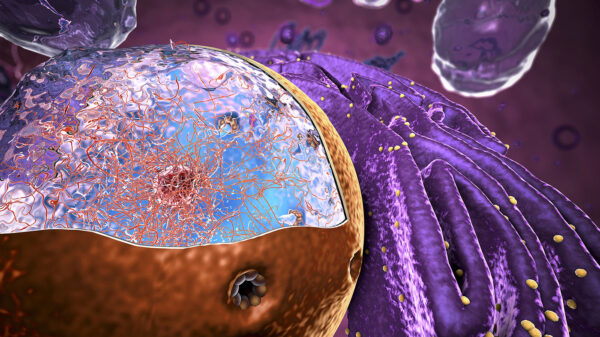A team of researchers from the University of Rome La Sapienza has completed an unprecedented genome assembly of the human retinal pigment epithelial cell line RPE-1, resulting in a reference-quality genome. Published in the journal Nature Communications, this study addresses long-standing discrepancies between existing human reference genomes and the actual genomes of cell lines used in experimental research.
Recent advancements in sequencing technology have allowed scientists to construct telomere-to-telomere (T2T) genomes, exemplified by the current CHM13 human reference. However, these assemblies do not accurately represent the genomes of specific cell lines, which has constrained the precision of experimental studies particularly in complex regions like centromeres.
### Details of the Assembly
The research team, led by Simona Giunta, PhD, an associate professor of human genomics, has developed the RPE1v1.1 genome assembly. This near-complete diploid genome was created by integrating high-coverage long-read sequencing with Hi-C chromosome conformation capture techniques. The resulting assembly offers a haplotype-resolved reference that includes both maternal and paternal genomes.
“Cell lines are the workhorses of modern biology, yet their genome assemblies have lagged behind in accuracy and completeness compared to the human reference,” Giunta stated. By resolving the centromeres of RPE-1 chromosomes, the study introduces a vital tool for enhancing the precision of genomic and epigenomic studies.
### Implications for Experimental Research
The RPE-1 cell line, derived from retinal pigment epithelial cells, is widely recognized as a stable model for scientific research due to its diploid karyotype. Historically, researchers have depended on the human reference genome, which fails to capture the unique structural variations of this cell line. This inadequacy has limited the accuracy of multi-omics analyses, particularly in regions characterized by repetitive and polymorphic sequences.
The new assembly reaches a reference quality, markedly improving the resolution of centromeres, an aspect that remains fragmented in the current human reference genome. These advancements facilitate enhanced mapping of regulatory and structural features within the genome. Notably, it aids in understanding kinetochore assembly, a crucial process that ensures accurate chromosome segregation during cell division.
Aligning experimental data directly to the RPE-1 reference, a method termed isogenomic mapping, significantly reduces alignment errors. This technique enhances haplotype resolution and allows for precise analysis of structural and regulatory variations.
### Future Directions
The study lays the groundwork for a broader initiative aimed at assembling high-quality genomes for other commonly used human cell lines. It envisions the creation of a Human Pangenome of Experimental Cell Lines, a resource that would systematically integrate reference-quality assemblies into graph-based frameworks. This approach ensures that functional genomic studies are firmly rooted in the genomic architecture of the systems being investigated.
Comparative analysis between the RPE-1 reference genome and the human pangenome indicates that the cell line retains significant human-like qualities, closely aligning with its population of origin. The implications of this research extend far beyond a single cell line, providing a pathway to improve the accuracy of genomic studies across various experimental models.
This achievement not only enhances the toolkit available to researchers but also represents a significant step forward in the quest for more precise and relevant genomic data in the field of human genetics.


































































